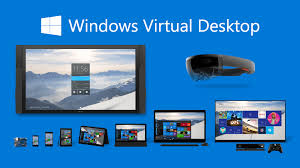After the pandemic, with the continuous growing technologies, the demand for online education and distance learning has increased. It is required and important as well for today’s learning environment. The upgradation of distance learning is transforming the education landscape.
It provides learners and institutions with limitless flexibility. From fully online degree courses to hybrid courses blending digital and class-based learning, comprehensive distance learning solutions empower educators to address diverse learner needs. With new and advanced tools, specially designed curriculum structure, and student-centered approaches, these services redefine accessibility and inclusivity within education. This post investigates the basic elements of distance learning services, their benefits, and how they are building a future for education.
Let’s Focus on Inclusive Distance Learning Services
Distance learning solutions are composed of solutions that enable learners to succeed outside the walls of traditional classrooms. The various types of distance learning include:
- Learning Management Systems (LMS): These are webspace hosting course materials, tracking enrollments, and presenting interactive tools for participation.
- Courseware Development: Professionally designed learning materials abiding by curriculum standards and student needs.
- Virtual Classrooms: Learning tools that employ real-time communication such as video conferencing, chat, and collaborative whiteboards to facilitate live classes.
- Assessment Tools: Online quizzes, assignments, and feedback systems that track what the student does, understands, and can demonstrate regarding performance.
- Student Support Services: Online counseling, mentorship, and tech support that minimize distress throughout a seamless learning experience.
What are the Advantages of Online Distance Learning?
Here are the details that tells the benefits for students, teachers and organizations as well adapting solutions for distance learning:
• It is easily accessible and flexible in learning. Students can get access to the course module anywhere and anytime. Also, this is the best learning option for working professionals or people with disabilities.
• One of the basic requirements to pursue a course is finance. Adaption of a distance learning course saves not only time but wealth as well. It is a cost-friendly option for both organizations and learners.
Key Elements of Total Distance Learning
Leading solutions for distance learning include the following:
LMS Platforms
An LMS is the heart of distance education, providing assets for content dissemination, communication, and performance monitoring. It could be Moodle, Blackboard, or Canvas.
Course Design
Content delivery involves multiple multimedia elements, which can include video, simulations, animations, and assessments, to provide an entirely virtual learning experience.
Live Collaboration Tools
Virtual classrooms allow for active engagement via such functionalities as breakout rooms, live polls, and shared whiteboards.
Optimization for Mobile Learning
In light of the ubiquitous proliferation of smartphones, distance learning services should support mobile functionalities to ensure access from anywhere and anytime.
Comprehensive Solutions for Assessments
Digital solutions for formative and summative assessments allow educators the capability to assess student progress accurately while upholding academic integrity.
Types of Distance Learning Solutions
Popularly, long-distance learning has two different types. Here are those that you can choose as per your convenience:
Synchronous Distance Learning
- Students and instructors interact in real-time.
- Classes are scheduled: There are fixed times for classes or meetings.
- Classes often rely on video conferencing tools. Live lectures, group work, projects, and even Q&A sessions occur in real time.
Asynchronous Distance Learning
- Learners can take the course at any time and pace.
- There is no particular time for classes or interactions.
- Flexibility: one can learn anytime and anywhere.
Distance Learning Services for Institutions: Tips
Institutional implementations of distance learning services should consider the following:
Align Curriculum with Standards
Courses will be aligned to any education benchmark standards, including state or national curriculum standards. For example, New York State Education Department-approved assessment modules help guarantee credibility in the U.S. education system.
Invest in Instructor Training
Equip instructors to understand how to use online software, design compelling digital content, and field student questions well.
Focus on Accessibility
Platforms are accessible to students with disabilities and meet established accessibility standards, such as WCAG.
Utilize Data Analytics
Monitor student engagement, learning gaps, and offer individualized support for better outcomes by leveraging analytics.
Engage Mechanisms of Feedback
Solicit regular feedback from students and instructors for further system development and improvement of student learning.
Learning at a Distance For Students: Best Practices
Here are some tips that can maximize a student’s distance learning experience:
Create a Dedicated Study Space: Make an area of distraction-free space specifically for attending virtual classes and doing assignments.
Develop Time Management Skills: Use digital planners or calendar apps in managing deadlines and putting out time for your self-study.
Engagement: Be active in comments, ask relevant questions, and seek feedback from the instructors.
Use Support Resources: Leverage virtual tutoring, peer forums, and career counseling available at distance learning services.
Adopt Technology: Get familiar with platforms and tools to tackle any kind of technical trouble that may arise in the way.
Trends Shaping the Future of Distance Learning
The evolution of distance learning services is being influenced by the advancement of technology and changes in the demands of education. Major trends include:
- Adaptive Experience: Artificial intelligence permits adaptive learning experiences for every student, promoting better outcomes.
- Microlearning Modules: Bite-sized content focuses and enhances retention, ideal for learners with busy schedules.
- Gamification in Education: Elements of gaming can be infused into lessons, the type that promotes engagement and motivation to a younger learner.
- Virtual and Augmented Reality: Immersive technologies alter the traditional subjects like sciences, history, and art into interactive experiences.
- Collaborative Learning Communities: Features of social learning motivate peer-to-peer interaction, enhancing one’s sense of belonging in virtual settings.
Final Note
Comprehensive distance learning services offer the flexibility and innovation needed to address modern education demands. From a customized LMS platform to NYSED-approved modules for an assessment, these solutions enable institutions with the ability to deliver quality education to a global audience.
The best practices, tools, and trends mentioned above are what educators can adopt in order to entice and engage their learners toward a simple yet multifaceted experience of mastering knowledge. As technology progresses, so will distance learning remain the heart of education in offering scope for both the learner and the institution. Ready to transform your educational offerings? Join a trusted distance learning provider and step into the future of education today!



